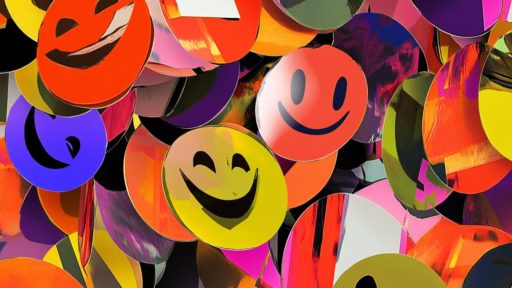Want to keep your brand message strong across all social media? Here’s how:
- Create a brand style guide
- Plan with a content calendar
- Use each platform’s unique features
- Keep visuals consistent
- Adjust tone for each platform
- Use similar themes across platforms
- Use hashtags strategically
- Tell your story consistently
- Set up a content workflow
- Check performance on each platform
Why it matters:
- Makes your brand easy to recognize
- Builds trust with your audience
- Clarifies your message
- Can boost revenue by up to 23%
Quick Comparison:
| Tip | Key Benefit | Challenge |
|---|---|---|
| Brand style guide | Consistent look and feel | Keeping it updated |
| Content calendar | Organized posting | Balancing planning and flexibility |
| Platform features | Maximizes engagement | Keeping up with platform changes |
| Visual consistency | Instant brand recognition | Adapting to different image sizes |
| Tone adjustment | Fits each platform’s vibe | Maintaining brand voice |
| Similar themes | Reinforces brand message | Avoiding repetition |
| Strategic hashtags | Increases reach | Finding the right balance |
| Consistent storytelling | Builds brand narrative | Adapting story to each platform |
| Content workflow | Streamlines production | Choosing the right tools |
| Performance tracking | Informs strategy | Interpreting data across platforms |
Remember: Consistency is key. Keep your message clear and your look uniform across all platforms to build a strong, recognizable brand.
Create a Brand Style Guide
A brand style guide is your rulebook for keeping content consistent. It outlines how your brand looks, sounds, and feels.
Include these in your guide:
- Brand story (mission, vision, values)
- Logo guidelines
- Color palette (exact codes)
- Typography
- Image guidelines
- Brand voice
Why bother? Forbes says consistent branding can boost revenue by up to 23%.
"A consistent brand voice is like a distinctive thread running through the fabric of your content, holding it together with strength and clarity." – Stephen McClelland, Digital Strategist at ProfileTree
Make your guide work:
- Keep it short (3-5 pages)
- Make it easy to access
- Update it regularly
Real-world examples:
| Brand | Style Guide Focus | Result |
|---|---|---|
| Visual language | Consistent use of blue color | |
| Mailchimp | Interactive guidelines | Clear copywriting and design rules |
| Zendesk | Editorial format | Simple brand identity dos and don’ts |
2. Plan Your Content with a Calendar
A content calendar keeps your posts organized. It’s your roadmap for consistent, timely messaging across platforms.
Here’s how to make it work:
- Pick your tool: Spreadsheet, Google Doc, or specialized software. Whatever fits your team.
-
Include the essentials: For each post, note:
- When it goes live
- Where it’s posted
- What type of content
- The actual text
- Hashtags and links
- Think ahead: Plan weeks or months out. You’ll have time to craft quality content and make tweaks.
- Mix it up: Use your calendar to balance different content types.
- Stay nimble: Leave room for last-minute posts or changes.
Many companies use tools to streamline planning:
| Tool | Standout Feature | Starting Price |
|---|---|---|
| Quuu | Easy scheduling | $19.79/month per channel |
| Hootsuite | All-in-one solution | $99/month |
| SocialPilot | Team collaboration | $30/month |
These tools can save time and keep your content on track. Quuu, for example, gives curates content for you alongside your existing content plan.
"A content calendar is like a roadmap for your social media strategy. It helps you stay on track and ensures you’re delivering the right message at the right time on each platform." – Akshay Kothari, CPO at Notion
3. Use Each Platform’s Special Features
Social media platforms aren’t one-size-fits-all. Here’s how to make the most of each:
Tailor your approach:
- TikTok? Go for laughs. 60% of users want funny stuff.
- Twitter? Share info. 53% of weekly users prefer it.
Use what makes each platform unique:
| Platform | Cool Feature | How to Use It |
|---|---|---|
| Stories Highlights | Show off your best stories | |
| Groups | Talk shop, show you know your stuff | |
| Video | Share pro-level videos | |
| TikTok | Challenges | Make your own to spread the word |
Tweak your message: Keep it consistent, but fit the platform. M&S nailed this on TikTok with a fun alter-ego for younger folks.
Be smart with cross-posting: Tools like Hootsuite can help, but watch out. As Michelle Martin from Hootsuite says:
"Just copy-pasting the same content to all networks? That’s a no-go."
Double-check those tags and hashtags – they’re not universal.
Keep up with changes: Platforms evolve. Instagram’s now all about entertainment, with Reels use up 40% since 2020.
4. Keep Your Look the Same Everywhere
Want people to spot your brand instantly? Keep it consistent across all social media. Here’s how:
Colors: Pick your brand colors and stick to them. People will start associating those colors with you.
Fonts: Choose brand-fitting fonts and use them everywhere. It keeps your text looking uniform.
Logo: One logo, all platforms. Just adjust the size as needed, but keep it clear.
Here’s a quick consistency guide:
| Element | Do This |
|---|---|
| Colors | Same color codes everywhere |
| Fonts | 1-2 fonts for all content |
| Logo | Same version, sized for each platform |
| Images | Consistent filters or editing style |
Pro tip: Create post templates that follow your brand style. It’s a time-saver and keeps everything looking uniform.
Take Kylie Skin‘s Instagram. They use pink everywhere. It makes their brand pop.
Don’t forget to check your brand look on different devices. What works on a computer might not on a phone.
5. Adjust Your Tone for Each Platform
Your brand voice stays the same, but your tone should change for different social media platforms. Here’s how:
Know the platform vibe. Facebook? Casual. LinkedIn? Professional.
Match what users expect:
- Twitter: Quick and witty. Short sentences. #Hashtags.
- Instagram: Visual stories. Eye-catching images. Brief captions.
- LinkedIn: Industry insights. More formal tone.
Keep your main message consistent across platforms.
Here’s a quick guide:
| Platform | Tone | Content Type |
|---|---|---|
| Friendly, casual | Stories, links, personal updates | |
| Visual, fun | High-quality images, Stories | |
| Concise, clever | Short updates, real-time news | |
| Professional, informative | Industry insights, longer articles |
Starbucks nails this. On Instagram? Colorful drink pics with fun captions. On LinkedIn? Company news and industry trends, more serious.
Think of it like this: Your brand voice is your personality. Your tone? How you express that personality in different situations.
"Your target audience is the number one determinant of your brand’s social voice." – Kahn Media
sbb-itb-43d9647
6. Use Similar Themes Across Platforms
Want to keep your brand message strong? Use content themes that work on multiple social media sites. Here’s how:
Pick themes that fit everywhere. Think infographics, client highlights, reviews, brand-building posts, and user-generated content. These can be tweaked for each platform while keeping your main message intact.
But don’t just copy-paste. Adjust for each platform:
| Platform | Content Approach |
|---|---|
| Eye-catching images, short captions | |
| Longer, detailed posts | |
| Brief, punchy updates | |
| Mix of visuals and text |
Keep your look consistent. Same color scheme and filters across platforms? That’s your ticket to quick brand recognition.
Mix it up. Don’t just stick to one type of post. Try educational, entertaining, and promotional content (but go easy on the promo stuff).
Let’s see this in action:
Coca-Cola‘s 2021 holiday campaign nailed it. They offered live, personal Santa greetings through Cameo. Why did it work? It had visual appeal for Instagram, shareable content for Facebook, brief updates for Twitter, and a brand story for LinkedIn.
The result? They connected with customers during the pandemic in a fresh way on each platform.
Bottom line: Keep your core message consistent, but fit in on each platform. It’s how you build trust and stick in people’s minds, no matter where they find you online.
7. Use Hashtags Across Platforms
Hashtags can boost your content’s reach, but each platform plays by different rules. Here’s the lowdown:
Twitter: Keep it tight with 1-2 hashtags per tweet. More can backfire. Try pairing your brand’s tag with a content-related one.
Instagram: 3-5 hashtags work well, but you’ve got room for up to 30. Mix popular tags with niche ones to cast a wider net.
Facebook: Easy does it. 1-2 hashtags max. Overdo it, and you’ll look spammy.
LinkedIn: No hard limits here. Sprinkle hashtags in your profile and posts, but keep it pro.
TikTok: Aim for 3-5 per video. Ride the trending tag wave for more eyeballs.
Quick reference:
| Platform | Sweet Spot | Pro Tip |
|---|---|---|
| 1-2 | Brand tag + content tag | |
| 3-5 (max 30) | Popular + niche mix | |
| 1-2 | End of longer posts | |
| No limit | Keep it professional | |
| TikTok | 3-5 | Jump on trends |
Want to stand out? Create a branded hashtag. It’s like Coca-Cola’s #ShareACoke – makes tracking a breeze.
Don’t forget: What’s hot on Twitter might flop on Instagram. Keep tabs on each platform’s trends.
And always, ALWAYS track your performance. Use those analytics tools to see what’s working where. Then tweak your game plan accordingly.
8. Tell Your Story Across Platforms
Want to build a strong brand presence? Share your story across different social media sites. Here’s how:
1. Start with your core message
Define your brand’s main story and values. This is your foundation.
2. Tailor for each platform
Adjust your story to fit each site’s style. Don’t lose its essence.
| Platform | Content Focus | Best Practices |
|---|---|---|
| Detailed posts | Share behind-the-scenes content | |
| Visual stories | Use high-quality images, short captions | |
| Quick updates | Craft punchy, shareable messages | |
| Professional content | Share industry insights, company news | |
| TikTok | Short videos | Create fun, trendy content |
3. Use a content calendar
Plan how your story unfolds over time. Keep your message steady and build anticipation.
4. Mix up your content types
Use text, images, videos, and polls. Keep things fresh and cater to different preferences.
5. Stay true to your brand voice
Keep your tone consistent across platforms. Help users recognize your brand anywhere.
6. Link your platforms
Guide followers from one platform to another. Tease a full YouTube video with a short Instagram clip.
7. Gather and use feedback
Pay attention to user responses on each platform. Fine-tune your approach based on this info.
"Consistency is the secret sauce of successful branding. It’s about delivering a cohesive experience that builds recognition and trust over time." – Vikash Kumar, Director of Design & head of Content
Remember: Your story should feel the same, no matter where it’s told. That’s how you build a strong, recognizable brand.
9. Set Up a Content Workflow for All Platforms
Want to keep your content strategy running like a well-oiled machine? Here’s how to set up a workflow that works across all platforms:
- Batch your content planning: Block off specific times for content creation. It’s like meal prepping, but for your social media posts.
- Use one dashboard to rule them all: Pick a tool that lets you schedule posts across platforms. It’s a game-changer. Check out these options:
| Tool | Starting Price | What’s Cool About It |
|---|---|---|
| Later | Free | Visual calendar, hashtag help |
| Hootsuite | $49/month | Real-time stats, team collab |
| Buffer | $15/month | Custom schedules, first comment scheduling |
- Create content templates: Save time with caption templates. It’s like having a cheat sheet for your brand voice.
- Plan ahead with a content calendar: Map out your content a month in advance. It’s like having a GPS for your social media journey.
- Set clear guidelines: Write down your brand’s style rules. It keeps everyone on the same page, no matter who’s creating content.
- Automate the boring stuff: Use tools to handle repetitive tasks. It frees you up for the creative work.
- Keep an eye on performance: Regularly check how your content’s doing. Use that info to tweak your strategy.
As Samantha Hembree from Outreach puts it:
"A solid social media workflow isn’t just about ideas; it’s about a systematic approach that sustains you through creative droughts."
10. Check How Your Content Performs on Each Platform
Want to know if your content’s hitting the mark? Here’s how to keep tabs on your performance:
1. Use built-in analytics tools
Every major social platform has its own analytics dashboard. Start there.
2. Try third-party tools
For a broader view, consider these options:
| Tool | Starting Price | Key Features |
|---|---|---|
| Buffer | $6/month | Multi-channel dashboard, engagement metrics |
| Sprout Social | $249/month | Cross-channel listening, detailed reports |
| Hootsuite | $99/month | Real-time stats, team collaboration |
3. Focus on key metrics
Keep an eye on:
- Engagement rate
- Reach and impressions
- Follower growth
- Click-through rates
- Conversion rates
4. Compare platforms
See how the same content performs across different platforms. This helps you tailor your approach.
5. Use Google Analytics
Find out which social platforms drive the most traffic to your site.
6. Create custom reports
Build reports that show the metrics you care about most.
7. Act on your findings
Use what you learn to improve your strategy. If something works well on one platform, try it on others.
"We’ve managed to grow one of our client’s social media accounts by 400%, from 6k to over 23k followers!" – Red Pigeon Media
Remember: What gets measured gets managed. Keep tracking, keep improving.
Conclusion
Consistent content across platforms isn’t just nice—it’s crucial. Here’s why:
1. Brand recognition
When your content looks the same everywhere, people remember you. It’s like spotting a friend in a crowd.
2. Trust
Consistency shows reliability. It tells your audience you’ve got your act together.
3. Sales boost
The numbers speak for themselves. Consistent brands can see up to 23% more revenue.
Check out these stats:
| Benefit | Impact |
|---|---|
| Visibility | 3.5x better than inconsistent brands |
| Conversion rate | 287% higher with 3+ marketing channels |
| Revenue growth | 10%+ for two-thirds of businesses |
As Šek Design Studio puts it:
"Consistency in design across platforms is not just a design principle; it’s a business strategy."
Ready to start? Here’s what to do:
- Create a brand guide
- Set up a content calendar
- Use the same colors and fonts everywhere
Stick with it. You’ll see results. Your brand will stand out, your message will stick, and your audience will grow.
Now, go make your brand the one people remember.





